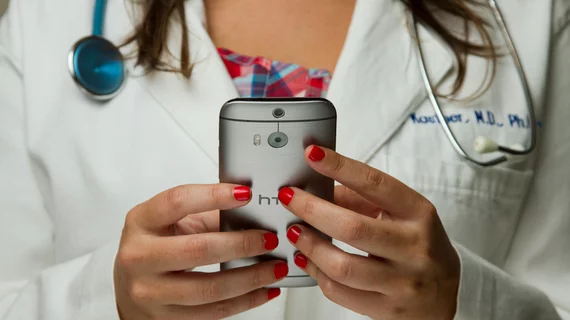Some communication platforms bring more disruptions than improvements to workflows
Secure messaging platforms are intended to improve workflows for physicians by minimizing disruptions related to phone calls. But new research suggests that they may actually be adding to physicians’ burdens, not alleviating them.
Published in JAMA Network Open, the study reveals that increased utilization of secure messaging could spur an uptick in phone calls and workplace communication in general.
“Historically, the telephone has been the primary method for clinician-to-clinician communication,” corresponding author Sunny S. Lou, MD, PhD, with the department of anesthesiology at Washington University School of Medicine in St Louis, and colleagues write. “However, with the advent of mobile devices and electronic health record (EHR) systems, text-based secure messaging platforms have grown in use rapidly, with studies suggesting a doubling in use over the past 5 years.”
For the study, researchers analyzed data collected from the hospital-issued smartphones of residents at Barnes-Jewish Hospital in St. Louis, Missouri, between Aug. 1, 2022, and Jan. 31, 2023. Residents were told to use the devices for workplace communications throughout their training. Data from the phones was used to compare residents’ EHR-integrated messaging use to total work-related telephone minutes, measured at the person-month level.
Of the 1,057 resident physicians, 94 were radiologists and 16 were radiation oncologists. Each resident sent or received a median of 148 (25-561) secure messages and used a median of 166 (21-380) telephone minutes per month.
Radiologists recorded some of the lowest volumes of secure messaging. However, they ranked second (behind general surgeons) in total person-months, at 498, despite being one of the least represented specialties in the group.
When the team compared those who used secure messaging less frequently (25th percentile) to physicians who utilized it often (75th percentile), they observed a direct association with increased monthly telephone minutes. On average, the 75th percentile spent 73 additional minutes on the phone per month than the 25th percentile, despite their frequent communication via messaging.
“This result is consistent with prior research showing that the use of new workplace communication channels may not mitigate the use of existing channels, highlighting the possibility that secure messaging may be associated with worsened communication burden and interruptions when not used thoughtfully,” the group notes, adding that more research is needed to better understand how to most effectively utilize workplace communication tools without increasing physician burden.
Learn more about the research here.

